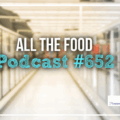What we eat has changed more in the last forty years than in the previous forty thousand. – Eric Schlosser, “Fast Food Nation”
This is mind-boggling to me that the food that humans consume has changed so quickly. Fast Food Nation (excellent book, highly recommend) is written about America, however fast food is global now, which is why I wrote “humans” rather than Americans.
Obesity, diabetes, liver and heart disease, etc. etc. etc. are not confined to the United States. China actually consumes more fast food than America, and they are also experiencing the health problems that come with it.
With all of this information, it is very inspiring to learn of positive changes that are currently being made, of people that are taking a stand and taking responsibility for their own (and others’) health.
Last night I was doing some online research and I happened upon a PDF document that I want to share with you regarding a beverage ban. This document states that effective July 01, 2006, all public school districts in Connecticut would allow only certain beverages to be sold to their students on school premises.
The only ones that they now allow are:
- Milk (flavored or plain). Cannot contain any artificial sweeteners or over 4 grams of sugar.
- Non-dairy milks (i.e.: soy or rice milk). Same guidelines as regular milk as well as they cannot contain more that 10% of their calories from saturated fat, and no more than 35% of calories from fat. Both of these percentages are per portion.
- 100% fruit or vegetable juice, or a combination of each. Cannot contain added sugars, sweeteners, or artificial sweeteners.
- Beverages that contain only water and fruit or vegetable juice. Same stipulations as 100% fruit or vegetable juice.
- Water. Same stipulations as 100% fruit or vegetable juice as well as they cannot contain caffeine. They can be flavored as long as they fit these stipulations.
The PDF document also lists all of the beverages that are not allowed, which include beverages that contain crystalline fructose. Therefore, every one of the 23 beverages that I listed in this previous post cannot be sold on their campuses.
I find this so inspiring. As adults, we can educate ourselves and make changes, however children are very susceptible to just falling in line with whatever they are offered. Couple this with the fact that sugar, fat, artificial additives and sweeteners make the food or drink taste awesome, how can they really resist when they are readily available?
Children and young adults are naturally going to go for what tastes great (so do adults!) The problem that many parents can face is that they provide their kids healthy whole foods and meals at home, but when they get to school, at every corner is a soda machine. Their parents aren’t there to enforce health and if the child has the money to buy, they more than likely will. Then, all of the sugar and artificial sweeteners set them up for wanting more of the same.
The Connecticut public schools have stood up and said “NO!” to the unhealthy beverages that are so prevalent on school campuses. It shows that there are those out there who are making changes and striving for healthy living. How fortunate for those children who attend public school in Connecticut.
It’s now been almost a year since this ban was instituted. If your child attends public school in Connecticut, I’d be interested to hear about the positive changes you have experienced!





I am surprised at the intelligence of some of these people who say “Diet Coke is Diet so it’s good for you!”. It’s not, it’s probably worse than regular Coke. Either way, as somebody who was brought up to eat well and drink well (with the odd beer, though I generally stick to the local breweries rather than the big heavily manufactured rubbish), it makes me happy that people are starting to do things like this.
We have a chef in the UK called Jamie Oliver who managed to get schools to eat healtily. It was a big thing over here a few years ago, and I think it has taken off.
I too was curious to see what crystalline fructose was when I read on the Label of Vitamin Water. We also want to make the public not only aware of the health hazards associated with refined sugars such as HFCS, but the detrimental affects of artificial sweeteners. Splenda is the most widely used artificial sweetener in the United States today. Most people are at a common misconception on the glycemic affect of Splenda. It does raise blood sugars levels and it is not calorie free! Splenda is a mixture of Sucalose, NOT SUCROSE, Maltodextrin (Dried Corn Syrup), and Dextrose (another name for glucose). All of the information provided to the public about it being safe for diabetics is a fib; it was proved that straight sucralose does not raise blood sugar levels, but how about when it is mixed with a derivative of HFCS and glucose? Better yet one gram on Splenda had about 4 calories of carbohydrates just like one gram of sugar, that’s right sucralose is so sweet and expensive to make that the average packet only has about 1 PERCENT sucralose. For those of you who do not know what sucralose is, it is the genetically altered glucose molecule that Monsanto has patented (who also discovered a synthetic form of Bovine Growth Hormone which they implement in cows to make them bigger faster and to yield more milk, this hormone is then passed out of the milk and metastasizes tumors and cysts in the body similar to a steroidal affect). They striped the glucose molecule of 3 carboxyl groups and added 3 chlorine elements to the glucose. Made from sugar taste like sugar? All artificial sweeteners are never sold to the public in their raw form as they have not been approved to. They all contain fillers in the packets and get to write them off as calorie free by law if there is less then 5 calories per serving and sugar free if there is less then .5 grams of sugar per serving. Hence the .5 gram packets Splenda uses. Aspertame is a whole other story which is composed from phenalanalyne, asparatic acid, and methynol. I’ll save that for next time. Most important is the scandalous approvals of the FDA for these artificial sweeteners and the ban of natural sweeteners like Stevia which is found in nature. Every artificial sweetener was an experiment being conducted for treating tumors, killing pesticides, and so on when it was accidentally tasted and found to be extremely sweet. Sucralose is 600 times sweeter then sugar, meaning 1% of the serving in the Splenda packet makes it taste whole lot sweeter than one gram of sugar.
Hi Rhys!
Yes, it’s all about that advertising and money, isn’t it. I actually used to be addicted to Diet Coke and Diet Pepsi, I’d go back and forth. I’m going to be writing about this in a post, but the short story is that I would wake up each morning with a “fuzzy” feeling on the top of my head. No joke.
Thanks for the info. on Jamie Oliver, that’s wonderful to hear. IMHO (and I’m not British), he should be prime minister if he could get something as important as that done! I’ll be googling for more details on his school program.
Have fun reading some more new blogs; there are so very many of them on the Problogger writing project list! 🙂
JoLynn
Hi Rafal,
Thank you for your comments! Wow, I can only imagine how long this took you!
Yes, there are several artificial sweeteners that you need to educate yourself about. I have not written about every one yet, however they are upcoming. 😉 All will be filed under my “sweeteners” category.
You are correct that Splenda is quite controversial. I have not fully researched it yet, although I do use it. All I can speak of is my own personal experience in comparing it to sugar, HFCS, and sugar alcohols. It does not cause me to crave sugar like HFCS and sugar alcohols (i.e.: mannitol to name one), and it does not give me a “fuzzy head” like Nutra Sweet did when I used to ingest it, mainly in diet sodas (future topic).
My focus on this topic is my health and also my addiction to sugar. I have currently cut out not only refined sugar, but also sugar alcohols and artificical sweeteners with the exception of Splenda. While I do not use very much of it, I know from my experience what I feel like when I am struggling with sugar addiction and I don’t have the issue of cravings with my current plan.
I will still cover both ends of Splenda when I research it and write on it, since it is so controversial. I would also like to try Stevia as I have not done so yet. If I like that I would not mind switching.
Thank you again for your comments Rafal. I know that this must have taken quite a bit of time for you and I am honored that you did so. 🙂
All the best,
JoLynn
You have to applaud decisions like these. I wonder what impact it is having on the behaviour and learning practices of the children? I can’t see it being negative.
Hi Patrick,
I would think the benefits would be positive. In the documentary “Super Size Me”, they profiled a school that was only for juvenile delinquent types of children.
They fed them homemade foods from a company in Wisconsin (instead of a bunch of processed, pre-packaged, frozen, low nutrient “food”), and those kids were better behaved than the “normal” kids in the public school that they profiled.
Look at how much better you feel as an adult when you eat whole, healthy foods. Children are in a heightened state of growth, a different stage of their development when they need nutrient dense food the most. I’m sure those kids in Connecticut are benefiting, although I do not know what kind of food they are served (this case only dealt with beverages, but it’s certainly a start).
It would be great to hear from some parents who have the first hand experience in that state, wouldn’t it? 🙂
All the best,
JoLynn